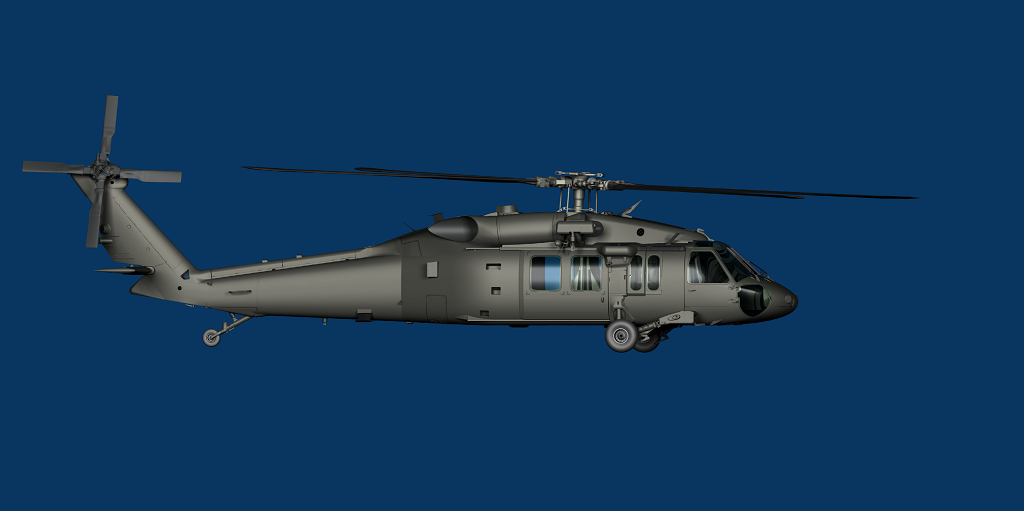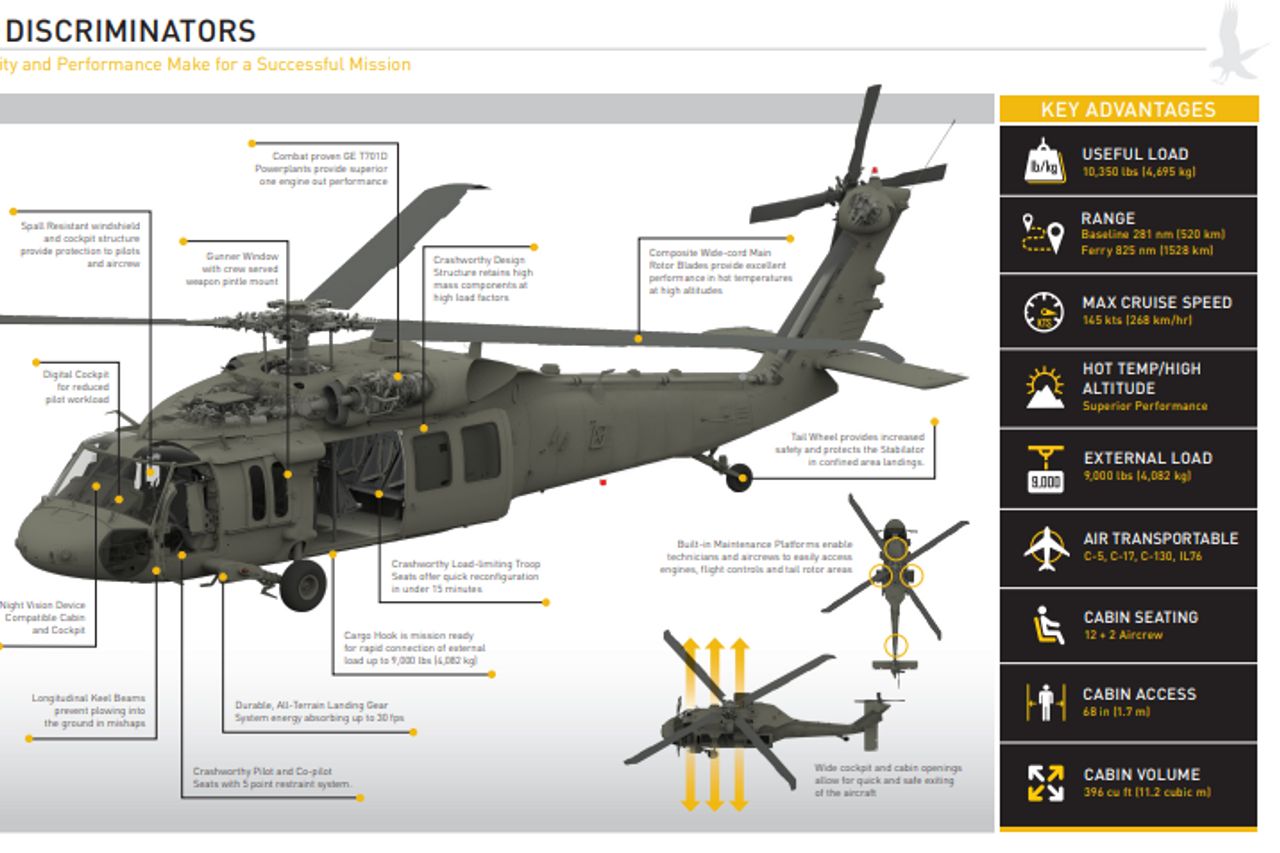How the Sikorsky S 70 Sticks Out in the Helicopter Market
How the Sikorsky S 70 Sticks Out in the Helicopter Market
Blog Article
High-Performance Multi-Role Rotorcraft Featuring Advanced Cabin Technologies and Integrated Sensor Systems
The realm of rotorcraft innovation has seen significant innovations in current times, specifically in the world of high-performance multi-role rotorcraft furnished with innovative cockpit innovations and perfectly integrated sensing unit systems. These technologies have not just increased the operational capacities of rotorcraft however have actually additionally significantly affected contemporary air travel operations on numerous fronts. From boosted objective flexibility to improved functional performance, the merging of sophisticated cockpit technologies and incorporated sensor systems has actually introduced a brand-new period of possibilities for rotorcraft applications. In the following conversation, we will discover the development of rotorcraft technology, explore the world of sophisticated cockpit technologies, and take a look at the implications of incorporated sensor systems on the functional versatility and effectiveness of modern rotorcraft.
Advancement of Rotorcraft Technology
The advancement of rotorcraft modern technology has been marked by substantial advancements in aerodynamics, materials, and propulsion systems, forming the capacities and efficiency of contemporary rotorcraft. Aerodynamic enhancements have boosted the efficiency and maneuverability of rotorcraft, enabling raised rate, dexterity, and stability throughout flight (sikorsky s 70). Advancements in materials, such as using composite products and progressed alloys, have actually caused lighter yet more powerful rotorcraft structures, improving general efficiency and toughness. Furthermore, developments in propulsion systems, including much more effective engines and cutting-edge propulsion innovations, have allowed rotorcraft to accomplish greater elevations, faster rates, and greater payloads.
These innovations have not just transformed the abilities of rotorcraft yet have actually likewise expanded their applications across numerous markets, consisting of army, industrial, and emergency services. The constant development of rotorcraft modern technology continues to drive technology in the field, pushing the borders of what is feasible and shaping the future of upright flight.
Advanced Cabin Innovations
Building upon the fundamental innovations in the rules of aerodynamics, materials, and propulsion systems, the world of rotorcraft technology currently moves emphasis towards introducing Advanced Cockpit Innovations. The assimilation of innovative technologies within the cabin environment plays a critical function in boosting the operational capacities, security, and efficiency of contemporary rotorcraft. sikorsky s 70. Advanced Cabin Innovations encompass a vast range of attributes designed to supply pilots with enhanced situational understanding, structured data administration, and instinctive control user interfaces
Among the crucial advancements in cockpit layout is the application of glass cabins, which change standard analog determines with high-resolution screens. These electronic systems offer customizable designs, real-time information integration, and enhanced readability, allowing pilots to accessibility vital details at a look. Additionally, progressed avionics systems, such as fly-by-wire controls and boosted fact displays, are reinventing just how pilots connect with the airplane, permitting accurate control and improved decision-making abilities.


Including sophisticated cabin advancements not only enhances pilot efficiency however also adds to general mission performance and security in complex functional environments. By leveraging modern innovations within the cockpit, rotorcraft suppliers are setting brand-new requirements for operational quality and goal success.
Integrated Sensor Equipments
With the development of rotorcraft innovation, the integration of innovative Integrated Sensor Equipment has come to be critical in boosting operational performance and safety. These Integrated Sensing unit Equipments include a vast range of modern technologies that offer critical data for numerous functions such as navigation, security, targeting, and environmental tracking. By flawlessly integrating sensors like radars, electronic cameras, lidar, and infrared systems into rotorcraft, operators can gain from boosted situational awareness, improved goal capacities, and decreased pilot work.
One trick advantage of Integrated Sensor Equipments is their ability to gather real-time data and supply workable insights to pilots and objective operators. As an example, progressed radar systems can detect and track targets over long distances, enabling very early hazard detection and effective reaction planning. In addition, integrating electro-optical and infrared video cameras enables rotorcraft to conduct reconnaissance and security goals with accuracy and accuracy.
Basically, the combination of sophisticated sensing unit modern technologies right into rotorcraft not just boosts functional efficiency however likewise adds dramatically to total goal success and staff safety. As rotorcraft remain to evolve, the function of Integrated Sensing unit Solution will undoubtedly stay at the forefront of development in the aerospace market.
Functional Convenience and Efficiency
Enhancing operational adaptability and efficiency in rotorcraft is a natural development from the combination of innovative Integrated Sensor Solutions. By leveraging the understandings and data given by these innovative sensing unit systems, rotorcraft can maximize their efficiency across different missions and environments.
Functional flexibility encompasses the capacity of rotorcraft to adapt to various functions and scenarios successfully. With sophisticated cabin modern technologies and integrated sensing unit systems, rotorcraft can effortlessly transition in between tasks such as search and rescue, clinical evacuation, security, and much more. This convenience improves the rotorcraft's capacity to satisfy varied operational requirements without requiring considerable reconfiguration.
Effectiveness in rotorcraft procedures is vital for making best use of objective performance and resource use. Integrated sensor systems play a critical duty in enhancing operational performance by providing real-time data on climate conditions, terrain mapping, target monitoring, and more. This data allows pilots to make informed choices swiftly, enhance flight courses, preserve gas, and boost overall goal productivity.
Effect On Modern Aeronautics Operations

In addition, the combination of innovative sensors promotes enhanced goal planning and implementation, enabling rotorcraft to do a vast array of tasks with boosted precision. From search and rescue procedures to aerial firefighting and legislation enforcement missions, the capacities of modern rotorcraft furnished with advanced cockpit modern technologies and integrated sensing unit systems are unrivaled.
Moreover, the impact of these innovations extends past functional efficiency to cost-effectiveness and sustainability. By enhancing flight courses, gas consumption, and maintenance timetables, high-performance rotorcraft equipped with sophisticated cabin technologies and sensors add to lowering functional costs and environmental effect, making them important properties in modern-day aviation operations.
Final Thought
In final thought, the high-performance multi-role rotorcraft with innovative cabin modern technologies and integrated sensor systems represents a considerable development in aeronautics modern technology. These developments improve operational versatility and effectiveness, eventually influencing modern-day aeronautics procedures in a favorable method. The combination of these sophisticated modern technologies enables boosted capacities and efficiency in different objective situations, showcasing the continued development of rotorcraft innovation in the aviation industry.
The world of rotorcraft modern technology has actually seen remarkable innovations in current times, specifically in the world of high-performance multi-role rotorcraft furnished with innovative cockpit innovations and perfectly integrated sensor systems. From enhanced goal convenience to boosted operational efficiency, try these out the merging of sophisticated cockpit technologies and incorporated sensor systems has actually ushered in a brand-new era of opportunities for rotorcraft applications. In the following discussion, we will discover the development of rotorcraft technology, dive into the realm of advanced cockpit technologies, and check out the ramifications of incorporated sensor systems on the functional convenience and efficiency of modern rotorcraft.

Report this page